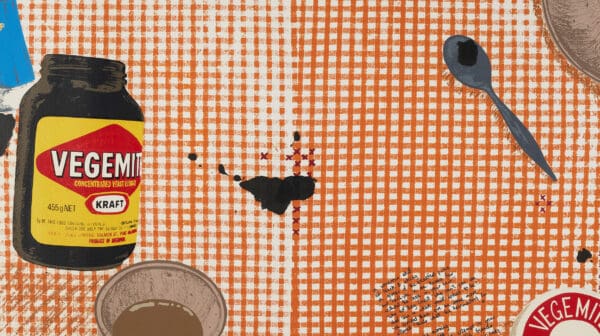
Reframing a Collection
Drawn from the Cruthers Collection of Women’s Art at the University of Western Australia (UWA), Lawrence Wilson Art Gallery’s show Place Makers, reframes the artists—who just happen to be female.
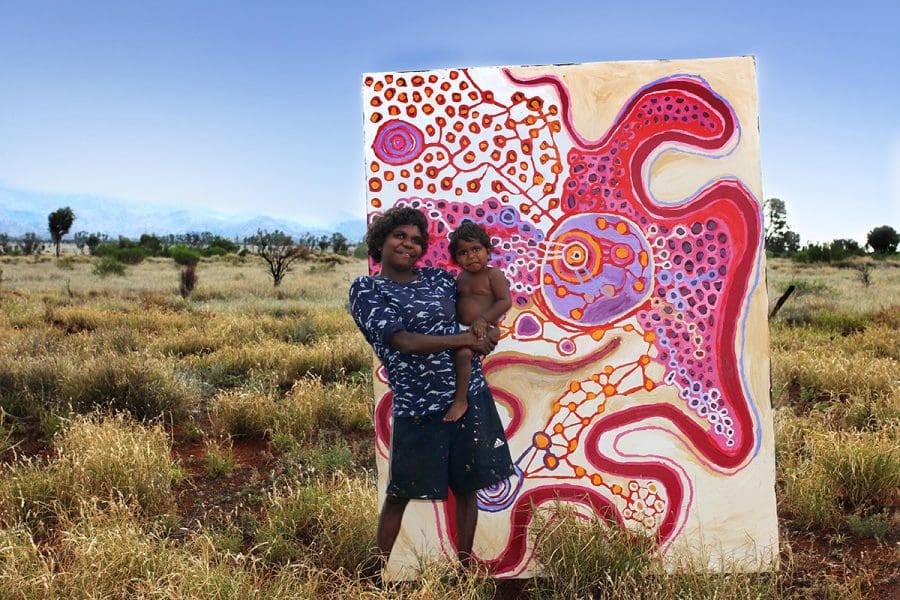
Sharon Adamson and her son Walter, Amata Community, 2018. Image credit Tjala Arts for the APY Art Centre Collective.
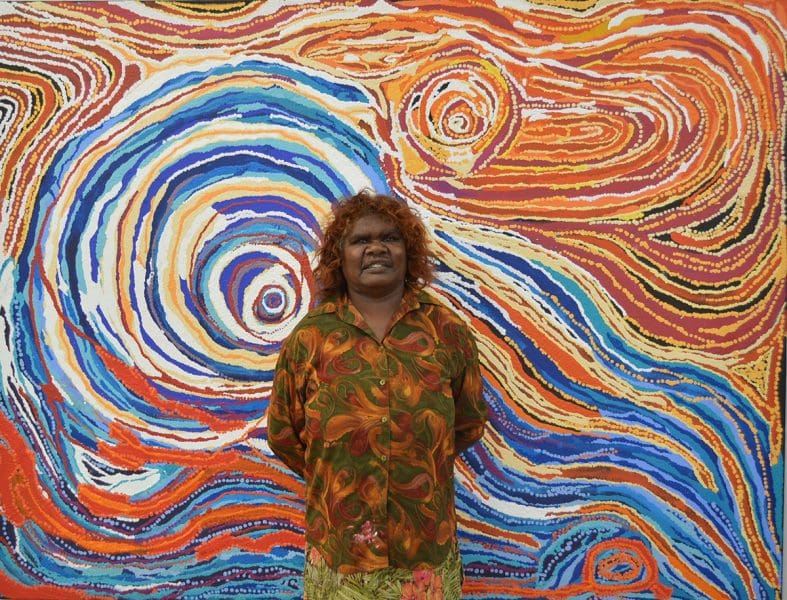
Carolanne Ken, Fregon Community 2018. Ngayuku Ngura, 200cmx200cm, acrylic on linen, 2018. Photo credit: Kaltjiti Arts for APY Art Centre Collective.
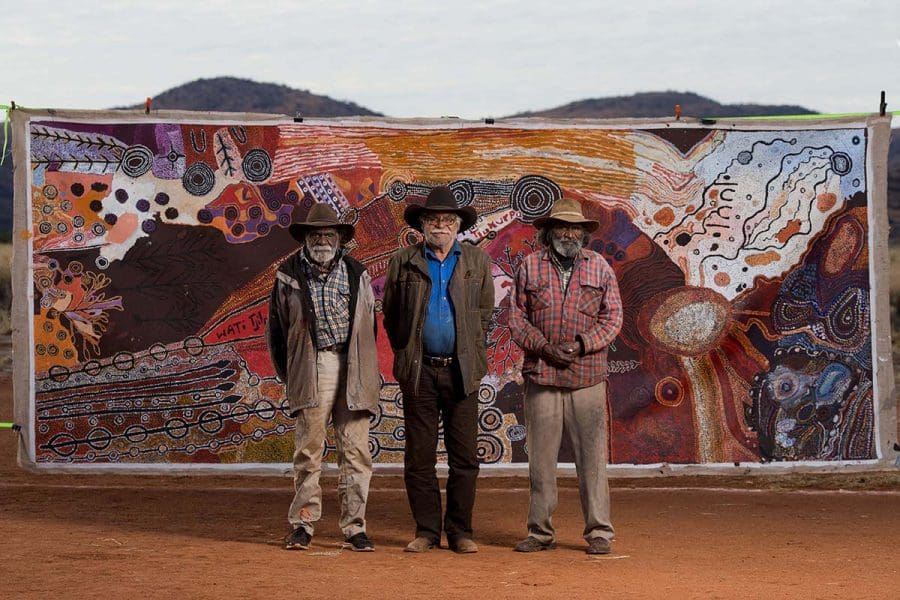
From left: Ginger Wikilyiri, Frank Young, Keith Stevens, Nyapari Community, 2017. Photo credit: Rhett Hammerton for the APY Art Centre Collective.

Kaltjiti Arts Toyota, Fregon Community, 2017. Photo credit: Kaltjiti Arts for APY Art Centre Collective
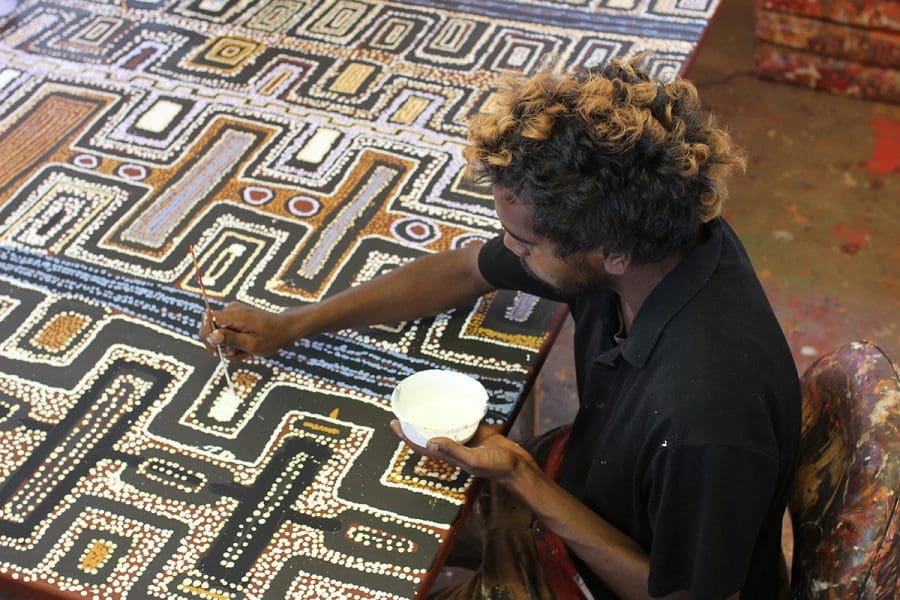
Kamarin Mitakiki, Amata Community, 2018. Mitakiki Men’s Collaborative, acrylic on linen, 198cmx198cm, Tjala Arts, 2018. Photo credit: Tjala Arts for the APY Art Centre Collective.

From left: Nyurpaya Kaika, Tjunkaya Tapaya, Tuppy Goodwin, Art Gallery of South Australia, 2017. Photo credit: APY Art Centre Collective.
Sharon Adamson, the great-granddaughter of the late Tiger Palpatja, is an emerging painter who works from Tjala Arts Centre. Juggling the dual demands of artistic commitment and recent motherhood, the artist has felt the career struggles of working from a remote community in the Anangu Pitjantjatjara Yankunytjatjara (APY) Lands. Yet Adamson’s paintings are now heading to Sydney as part of the first exhibition in APY Art Centre Collective’s new gallery space.
“The APY Art Centre Collective was established by the elders to support regional collaborations and artists,” says APY Collective manager Skye O’Meara. “These are the only vehicles of employment in the community. They are places where culture is celebrated in community and elders instruct younger generations.”

After five years of planning, the organisation is now opening the first Anangu-owned gallery in Sydney.
As O’Meara points out, “Of that 500, there are less than 100 that have gallery representation, so the gallery is really trying to create what the ARI does for non-Indigenous artists; it’s a launching platform, a space for special projects and a space for early-career artists to have their first show.”
As an Indigenous owned and operated enterprise, the APY Gallery will provide agency for Indigenous artists, while also working towards future sustainability. “The space allows us to overcome the challenges of living in a remote and isolated environment,” explains O’Meara. “What they elders want for the young people is to shore up the sustainability of their art centres.”
Spanning a range of mediums, the show speaks of the stories that artists have learned from grandparents and senior women and men.

Overall, O’Meara hopes the gallery space will prompt better understanding and appreciation of Indigenous arts centres and their vital functions. “Art centres are the ethical model in our industry,” she says. “The Indigenous art industry has been fraught with opportunism and individuals that are taking advantage, and we hope to be able to give art-lovers a clear understanding of the different models in the industry so they can support art centres and support Aboriginal artists with the knowledge that the artists are being paid and that the money is being returned to community.”
Malatja Tjutangku Ara Irititja Kunpungku Kanyini – Old Knowledge, Young Blood
APY Gallery
23 March – 30 April